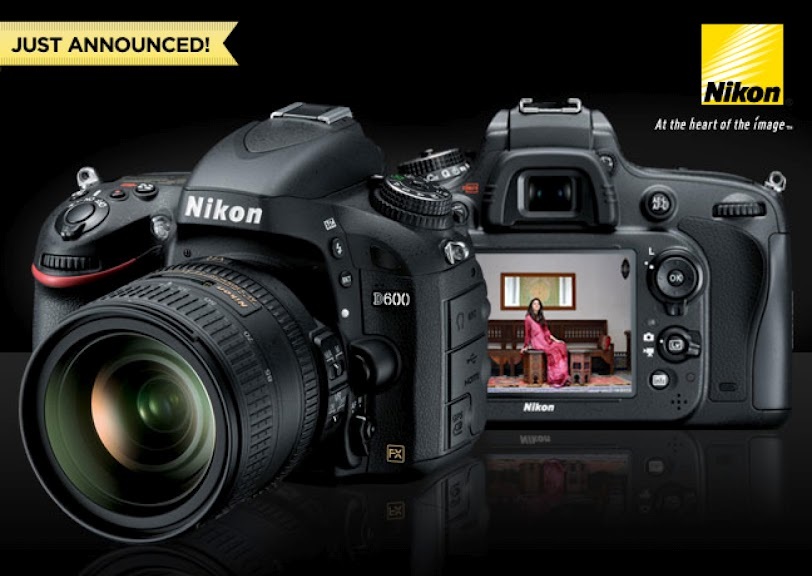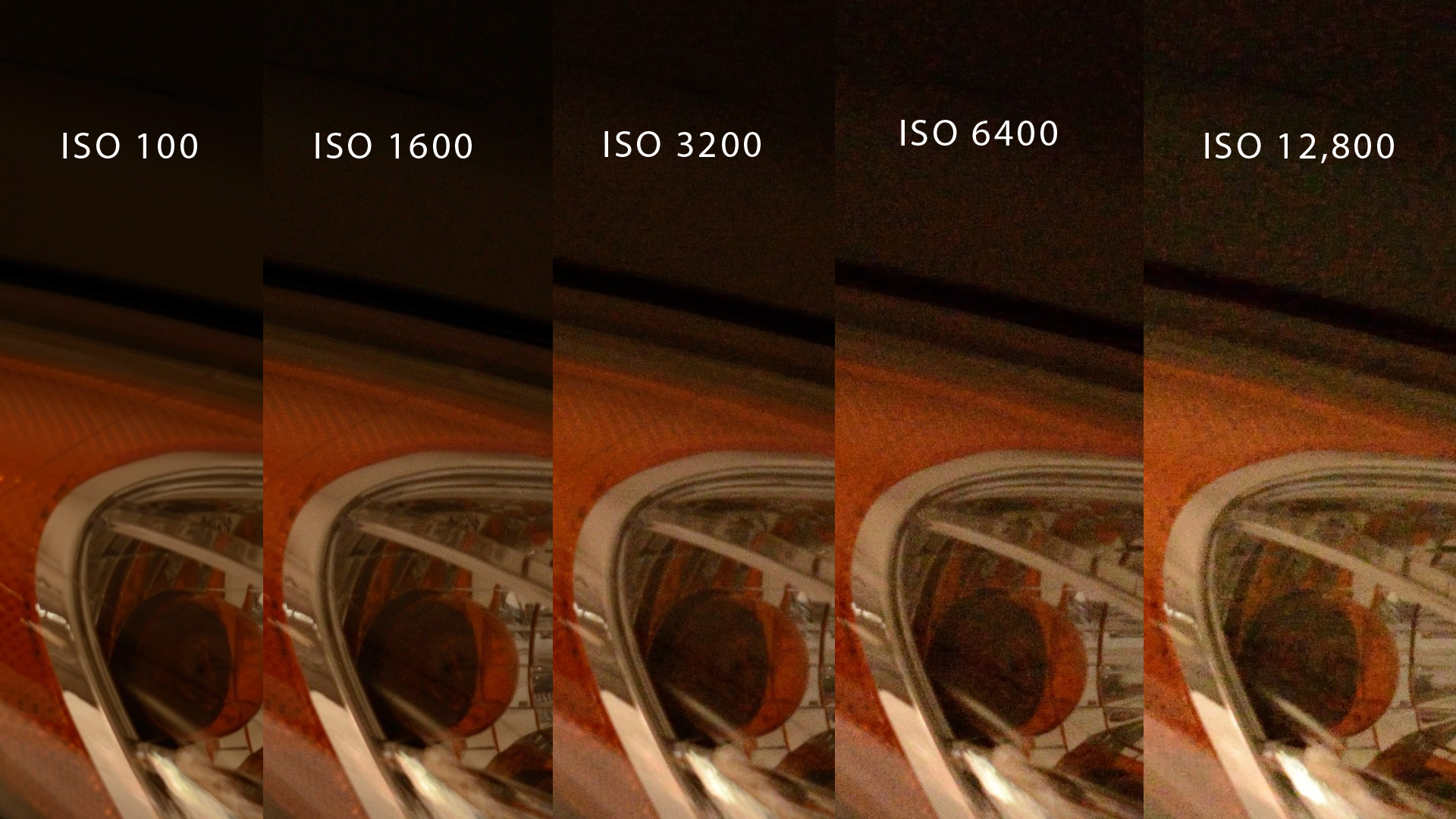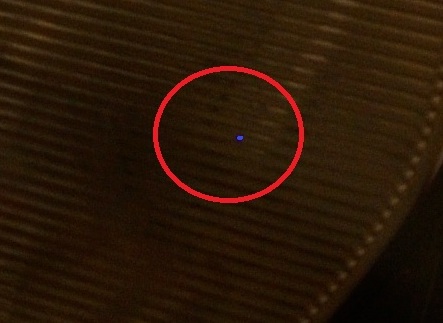Reviews
Nikon D600 Review
 An unbelievable DSLR at an unbelievable price widely available almost immediately after an announcement? This surely cannot be true. While many waited months for the D800 & 5D mark III and others waited the better part of the year for the D4 and 1DX, this ever important camera is now available after only a few weeks. And at first glance, the results are amazing. Stay tuned for this full review. It will be updated daily with new information, impressions, sample photographs, and results.
An unbelievable DSLR at an unbelievable price widely available almost immediately after an announcement? This surely cannot be true. While many waited months for the D800 & 5D mark III and others waited the better part of the year for the D4 and 1DX, this ever important camera is now available after only a few weeks. And at first glance, the results are amazing. Stay tuned for this full review. It will be updated daily with new information, impressions, sample photographs, and results.
Hardware
The Nikon D600 is far from a cheap camera. At $2,100, it commands almost double the D7000 and Canon 7D while offering similar build quality, size, weight, and controls. Given this, the D600 is constructed from a Magnesium Alloy shell covering all areas except the flash unit and front of the device. The result is a firm feeling, grippy, and premium device. However, for those of us used to large body full frame cameras, it is difficult to not write off the D600 as ‘cheap feeling’ because of its small size and lightweight body. For a full frame camera, the D600 is sized below the cropped sensor Canon 7D & about the same as the Nikon D7000 making it feel like a consumer model. This really is a matter of perception more than quality however as the D600 is built well with high end materials. A walk around the body reveils a larger 3.2” screen than that of the D7000, D700, 7D, 5D2, and even the upcoming Canon competitor, the 6D. Also welcome is the 100% viewfinder coverage which is is absent from cropped sensor cameras as well as the Canon 6D. Controls are very similar to typical Nikon DSLRs and seem to evenly split the difference between the D7000 and D800. The ports include a coveted headphone jack and are covered under a robust flap, better than any Canon models but still short of the D800. The front reveals a customizable depth of field preview button as well as a customizable function button. These buttons however are small compared to the D800 and a little more difficult to find, an obvious trade-off to the smaller body. The top features a dual locking control wheel which is unfortunately difficult to unlock. The small buttons are tough to press using a single hand and become a pain when frequently changing shooting speeds or modes. Nikon’s placement for the on/off power switch is in the typical location for Nikon, however, this location makes it easy to accidentally power off the camera when shooting if you are a Canon shooter or not used to this design. Another welcome feature is the pop up flash which can be used to trigger slave flashes or to aid with focusing in a dark environment. Dual SD card slots should warranty cheers as well from many photographers as it will allow redundancy when shooting important events, or offer overflow and other features if needed. Overall, Nikon has produced a winning piece of hardware and the small size & weight will be a welcome change for many shooters, even if it does make it look and feel more like a consumer camera.
Operations/Controls
The Nikon D600 has a fairly intelligent menu system which is well organized. Some of the menu items are difficult to understand based on the title, but a quick glance at the user manual should clear up most issues. There is no 100% zoom button like the Nikon D800 and no ability to map the feature to another button which (Canon does not offer this either) and thus you must hit the zoom in button several times to zoom to 100%. When zooming in live view, you will also notice that the image frame rate changes to a blisteringly slow rate of what looks like 10fps. This makes focusing and even composition almost impossible when zoomed in during live view.The other problem with the zoom control is that it is shared with the ISO button. While this did not seem that it would be an issue at first, it quickly became a nightmare if you use image review. After taking a picture, the image appears on the rear LCD for a set time and while the image is on the screen, the ISO button becomes a zoom button. As a result, I could not change the ISO quickly without waiting for the image review timeout or hitting the shutter half way to get out of the screen. This became HUGE for me as an event shooter and I eventually ended up turning off image review to not obstruct my shooting. The rear LCD screen is not as easily readable as the white on black of the Canon screen, however, it does the job well. Unfortunately, there are 2 issues for me, especially as a Canon user, that make this camera difficult to use in some locations. The exposure reading is only viewable in the viewfinder and the rear LCD and not in the top LCD. This would not be as large of an issue except that the rear LCD screen turns off every time you press the shutter button. As of now, there is no override for this nor do I suspect there will be. While many (especially longtime Nikon or Film shooters) will not mind this, Canon offers this ability and it can be very helpful to see the rear LCD screen in many occasions. For those who have poor eyesight, the top LCD can be difficult to navigate with it’s small cramped icons. Also, if you need to see the exposure reading and cannot navigate your eye to the viewfinder, you will be forced to hit the ‘info’ button every time you need to turn on the screen. Hitting info after every shot is a big problem for me, especially for a feature that requires nothing more than an additional menu option to have the LCD screen ‘Always On’. The buttons on this camera are also very small all around and can be difficult to use without taking your eye away from the viewfinder. However, the benefit to this is a lightweight, small body that will not strain your neck, even after a long day of shooting. For the first time, I will be happy to carry a full frame camera with me on any vacation or hiking trip. Overall, this Nikon does a great job trying to split the difference between a pro DSLR and a more portable, friendly prosumer/consumer model. And if you ever want the additional controls and larger body with bigger buttons, Nikon does offer the D800 for only $900 more.
Low Light Testing
 The Nikon D600 is a very remarkable camera in low light. Despite the 24mp sensor size, images looked incredible up to ISO1600 great until 3200, good at ISO 6400 and even usable at ISO 12,800. ISO 1,600 barely looked different from ISO 100, even in the 100% crops as seen in the left picture. Once reaching ISO 3200 though, color noise began to creep in and was a bit distracting. A simple noise reduction cleaned it up nicely though without really losing any noticeable detail. Blacks did begin to turn a dark brown around 3200-6400 ISO though leaving some reason to stay lower. By 6400 ISO detail began to slip away when viewing at 100% though I would have no problem shooting this in a pinch. In a well lit scene, the difference was even less noticeable. By 12,800, color noise is very noticeable and the grain is pulling out significant detail. However, this is still a stop or two better than the D7000 & Canon 7D. If you did not have issues using those cameras at ISO 3200, you will appreciate the quality from the Nikon even up to ISO 12,800. Unfortunately, Nikon only technically goes to ISO 6400 and thus a stop above that is represented in the camera as 'Hi-1". This however posed an issue as the raw and jpeg files did not display ANY iso information. As a result, you will never know the ISO value of any shot over 6400 and any auto filters you may have previously used in lightroom to apply a certain amount of NR to high ISO files will no longer work. I see that as an issue for those who desire to shoot in low light. However, if you stay below ISO 6400, which I would recommend for most use, you will not have an issue with this. The camera was set to RAW capture for all tests and no noise reduction was applied in post.
The Nikon D600 is a very remarkable camera in low light. Despite the 24mp sensor size, images looked incredible up to ISO1600 great until 3200, good at ISO 6400 and even usable at ISO 12,800. ISO 1,600 barely looked different from ISO 100, even in the 100% crops as seen in the left picture. Once reaching ISO 3200 though, color noise began to creep in and was a bit distracting. A simple noise reduction cleaned it up nicely though without really losing any noticeable detail. Blacks did begin to turn a dark brown around 3200-6400 ISO though leaving some reason to stay lower. By 6400 ISO detail began to slip away when viewing at 100% though I would have no problem shooting this in a pinch. In a well lit scene, the difference was even less noticeable. By 12,800, color noise is very noticeable and the grain is pulling out significant detail. However, this is still a stop or two better than the D7000 & Canon 7D. If you did not have issues using those cameras at ISO 3200, you will appreciate the quality from the Nikon even up to ISO 12,800. Unfortunately, Nikon only technically goes to ISO 6400 and thus a stop above that is represented in the camera as 'Hi-1". This however posed an issue as the raw and jpeg files did not display ANY iso information. As a result, you will never know the ISO value of any shot over 6400 and any auto filters you may have previously used in lightroom to apply a certain amount of NR to high ISO files will no longer work. I see that as an issue for those who desire to shoot in low light. However, if you stay below ISO 6400, which I would recommend for most use, you will not have an issue with this. The camera was set to RAW capture for all tests and no noise reduction was applied in post.
Video Recording - Watch on Youtube
Video recording turned out to be a larger issue than I thought it would. While the quality of the image looked great and possibly even better than the Canon 7D & 5D3 (direct comparison on the way), using the video mode on this camera was a dreadful nightmare. The problem began when trying to adjust the aperture. While most controls can be adjusted during capture, the aperture (and mic levels) cannot. Not a huge deal, I thought to myself as changing the aperture while shooting is not something you should be doing anyway if you don't have to (although it is better than being improperly exposed or missing a scene). There are times where you need to capture immediately to avoid missing something important and it is better to adjust lighting mid shoot than to miss the scene all together for events. Upon stopping recording and going to change the aperture, I quickly realized that the aperture was not adjustable in live view at all!!! To compound this issue, the camera does not show exposure levels anywhere during video recording and the only method of knowing a proper exposure for video is to look at the screen. But to make adjustments to the aperture requires exiting live view and no longer being able to view the screen. Thus I was unable to obtain correct exposure on the camera without exiting and entering live view multiple times. To compound the issue further, when you exit live view, the camera returns the shutter speed to whatever the default was for photo shooting but maintains the aperture from video and vice versa. This means that going between video and photo shooting will be impossible without having to redo your exposure completely every time. This is a none starter for me, even though I rarely record video, due to the inability to use video easily in almost every circumstance. Obviously you could use a variable ND filter instead of aperture to control your exposure during video shooting but this would only work for those shooting video exclusively and when you don't need additional light. This would not help indoor or lower light shooting in any way.
Problems/Issues/NIGHTMARE!
 After shooting the low light images, I noticed something very unfortunate. There is a bad pixel on the image sensor. A pure blue pixel cam be easily seen in a 100% view of the image at full size on my monitor. I also discovered a red pixel that is bad during further exploration. It was evident in every picture except those at ISO HI-1+ so i'm not sure if they were either too grainy to notice or there is something different going on with those. It is very evident when looking at the photos and is unfortunate to see in this level camera brand new. The camera is going back to the store shortly as a result and I highly doubt I will be asking for a replacement.
After shooting the low light images, I noticed something very unfortunate. There is a bad pixel on the image sensor. A pure blue pixel cam be easily seen in a 100% view of the image at full size on my monitor. I also discovered a red pixel that is bad during further exploration. It was evident in every picture except those at ISO HI-1+ so i'm not sure if they were either too grainy to notice or there is something different going on with those. It is very evident when looking at the photos and is unfortunate to see in this level camera brand new. The camera is going back to the store shortly as a result and I highly doubt I will be asking for a replacement.
The Big Picture - Picture Quality/Dynamic Range - Watch on Youtube
 Ok, I get it, the real question is whether the D600 takes a great picture and while I still have many more tests to complete, I can confidently say yes. Examples of dynamic range seen in the video showed that the camera is very capable at holding an unbelievable amount of detail in the image. The 7D looks like a consumer camera by comparison in these tests as the D600 holds levels in the blown out sky like a champ. I did find that the images looked a little yellow/green and needed magenta in almost every picture to bring the colors back to a natural level. We will have to see if that is adjusted for when Lightroom allows importing and profiles for the D600 raw files. Overall though, quality is unbelievable and images are impressively sharp.
Ok, I get it, the real question is whether the D600 takes a great picture and while I still have many more tests to complete, I can confidently say yes. Examples of dynamic range seen in the video showed that the camera is very capable at holding an unbelievable amount of detail in the image. The 7D looks like a consumer camera by comparison in these tests as the D600 holds levels in the blown out sky like a champ. I did find that the images looked a little yellow/green and needed magenta in almost every picture to bring the colors back to a natural level. We will have to see if that is adjusted for when Lightroom allows importing and profiles for the D600 raw files. Overall though, quality is unbelievable and images are impressively sharp.
Issues - updated
Unfortunately my D600 is plagued by a huge issue with the shutter mechanism. Even before changing lenses I began to notice dust on the sensor. While this is not unique to the D600 generally this is the result of continuous changing of lenses in dusty environments. A quick cleaning was only a temporary solution and the problem returned almost immediately. To make matters even worse, it looks like oil is now leaking on the corners of the sensor after shooting. This seems to be a common issue with the D600 and Nikon refuses to acknowledge the issue officially though they are all too kind to clean it.
Update - Nikon has now release the D610 which surprise, ONLY replaces the shutter mechanism of the D600. Unfortunately, there was no announcement for a fix to the D600 and prices for the D600 have fallen to new lows.
Conclusion
 I am unfortunately met with mixed feelings about the Nikon D600. The quality is astounding, and there is no getting around that. Even at ISO values of 3200, the camera exhibits near perfect images without any noise reduction. However, there are some photographic and ergonomic issues that are difficult to get around when shooting in a variety of different environments. The result is a camera that I find difficult to use in many circumstances for most professional shooters, even those coming from previous Nikon Cameras. When entering the video mode, the issues are compounded to almost unusable levels which is a shame considering the quality that this camera produces. The blown pixel on my image sensor will obviously bring me back to the store with the camera and make it easier to consider a return instead of an exchange. I had very high hopes for this camera, especially given the issues that the Canon 6D has for professional shooters, and given the unbelievable image quality of the Nikon D800. While the image quality remains impressive, Nikon has made some functional compromises which despite the impressive spec list, make this camera a difficult choice for professional shooters. The light size and weight will make this a desired body for vacation and enthusiast photographers and the quality will blow away anything on the market, but I have difficulty recommending this camera to anyone else or for video shooters unless they are prepared to encounter a long list of usability issues in exchange for great quality at a great price. It remains to be seen if and how Nikon will address some of these issues (allowing mapping of the ISO button to a different button for example), but given past changes from DSLR manufactures, changes like this can take months/years and are rare. Because the Canon 6D is still not available, there is really no direct competitor on the market to the D600, and even when the 6D is released, there are issues with the focus system and single card slot for example that will keep many professionals at bay. However, if the 6D can avoid some of the usability issues of the D600, it may be a great contender for enthusiast or prosumer users. I am tempted to keep the D600 for image quality alone but image quality without usability will result in many missed opportunities for great photographs.
I am unfortunately met with mixed feelings about the Nikon D600. The quality is astounding, and there is no getting around that. Even at ISO values of 3200, the camera exhibits near perfect images without any noise reduction. However, there are some photographic and ergonomic issues that are difficult to get around when shooting in a variety of different environments. The result is a camera that I find difficult to use in many circumstances for most professional shooters, even those coming from previous Nikon Cameras. When entering the video mode, the issues are compounded to almost unusable levels which is a shame considering the quality that this camera produces. The blown pixel on my image sensor will obviously bring me back to the store with the camera and make it easier to consider a return instead of an exchange. I had very high hopes for this camera, especially given the issues that the Canon 6D has for professional shooters, and given the unbelievable image quality of the Nikon D800. While the image quality remains impressive, Nikon has made some functional compromises which despite the impressive spec list, make this camera a difficult choice for professional shooters. The light size and weight will make this a desired body for vacation and enthusiast photographers and the quality will blow away anything on the market, but I have difficulty recommending this camera to anyone else or for video shooters unless they are prepared to encounter a long list of usability issues in exchange for great quality at a great price. It remains to be seen if and how Nikon will address some of these issues (allowing mapping of the ISO button to a different button for example), but given past changes from DSLR manufactures, changes like this can take months/years and are rare. Because the Canon 6D is still not available, there is really no direct competitor on the market to the D600, and even when the 6D is released, there are issues with the focus system and single card slot for example that will keep many professionals at bay. However, if the 6D can avoid some of the usability issues of the D600, it may be a great contender for enthusiast or prosumer users. I am tempted to keep the D600 for image quality alone but image quality without usability will result in many missed opportunities for great photographs.
Available on Amazon.com:
Nikon D600 24.3 MP CMOS FX-Format Digital SLR Camera (Body Only)
Nikon D600 24.3 MP CMOS FX-Format Digital SLR Camera with 24-85mm f/3.5-4.5G ED VR AF-S Nikkor Lens










